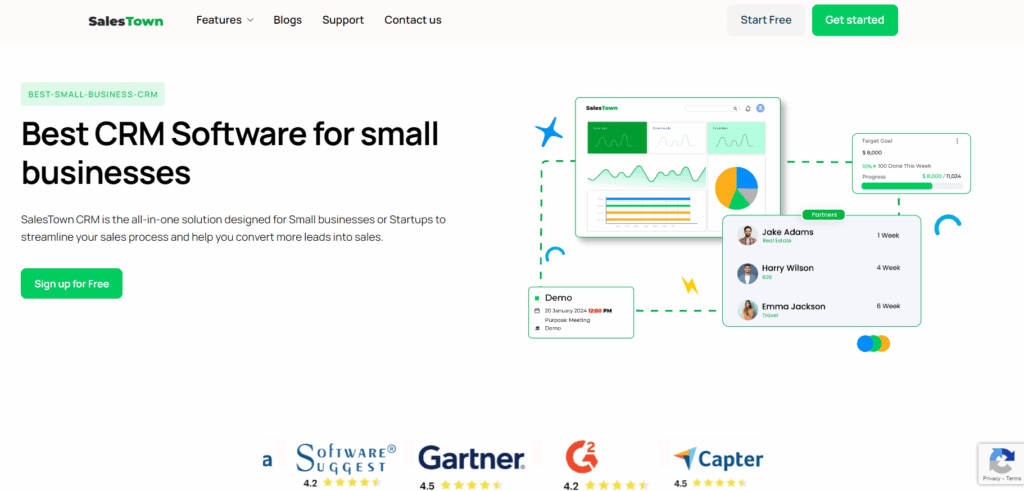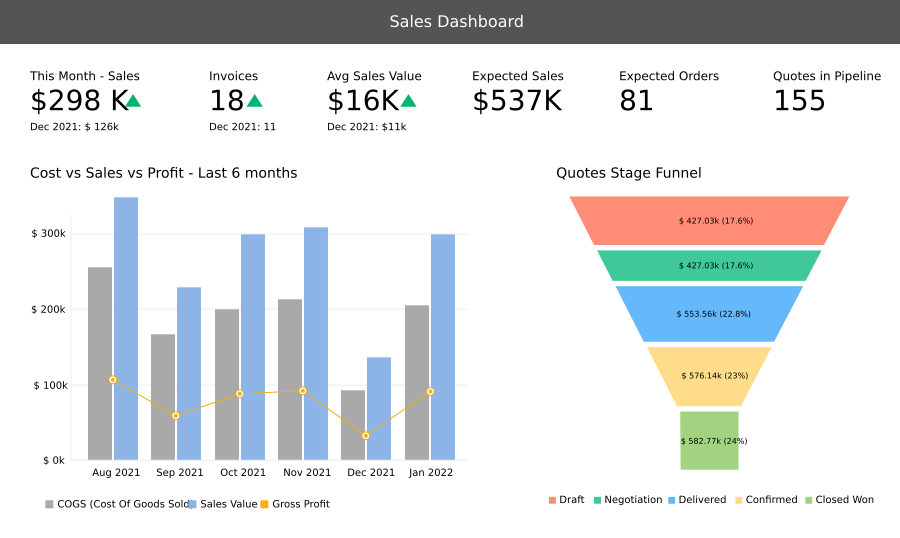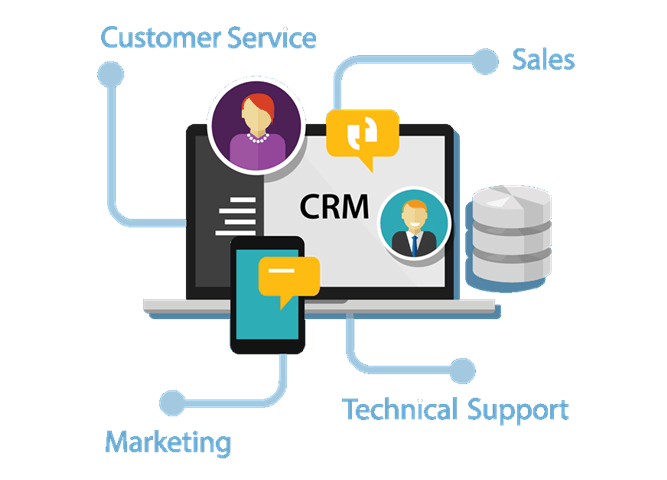
Introduction: Why Your Small Business Needs a CRM (and How to Choose the Right One)
Running a small business is a whirlwind. You’re juggling everything from product development and marketing to sales and customer service. In the midst of this chaos, it’s easy for customer relationships to fall by the wayside. That’s where a Customer Relationship Management (CRM) system steps in. It’s not just for the big guys; in fact, a CRM is often even more crucial for small businesses. It’s the central hub for all your customer interactions, helping you stay organized, improve communication, and ultimately, boost your bottom line.
Think of it this way: your customers are the lifeblood of your business. Without them, you’re…well, you’re not in business. A CRM helps you nurture those relationships, turning leads into loyal customers and keeping them coming back for more. It allows you to personalize your interactions, track customer preferences, and provide exceptional service – all of which contribute to a positive customer experience.
But choosing the right CRM can feel overwhelming. The market is flooded with options, each boasting a different set of features and benefits. That’s where this checklist comes in. We’ll break down everything you need to know, from assessing your needs to implementing your chosen system and maximizing its potential. By the end, you’ll have a clear roadmap to navigate the world of CRMs and find the perfect fit for your small business.
Phase 1: Assessing Your Needs – The Foundation of CRM Success
Before you even start looking at CRM software, you need to understand your own business. What are your goals? What are your pain points? What do you need a CRM to *do* for you? Taking the time to answer these questions is crucial. It’s the foundation upon which your entire CRM strategy will be built. Think of it as building a house; you wouldn’t start laying bricks without a solid blueprint, would you?
1. Define Your Business Goals and Objectives
What do you want to achieve with a CRM? Are you looking to:
- Increase Sales? A CRM can help you track leads, manage your sales pipeline, and close more deals.
- Improve Customer Retention? A CRM allows you to personalize your interactions, provide better support, and build stronger customer relationships.
- Enhance Marketing Efforts? A CRM can help you segment your audience, automate your campaigns, and track your marketing ROI.
- Streamline Customer Service? A CRM provides a centralized location for customer data, allowing you to resolve issues faster and more efficiently.
- Gain Better Insights? A CRM provides data analytics, allowing you to track key performance indicators (KPIs) and make data-driven decisions.
Be specific. Instead of just saying “increase sales,” aim for something like “increase sales by 15% within the next year.” This will give you a clear benchmark to measure your success.
2. Identify Your Customer Relationship Challenges
What are the biggest headaches in your current customer interactions? Are you struggling with:
- Lost Leads? Are potential customers slipping through the cracks?
- Poor Communication? Are you missing important information or struggling to keep track of conversations?
- Inefficient Processes? Are your sales, marketing, and customer service workflows clunky and time-consuming?
- Lack of Customer Data? Do you have a complete picture of your customers, including their preferences and purchase history?
- Inconsistent Customer Experience? Are customers receiving different levels of service depending on who they interact with?
Write down these challenges. They will become your priorities when you’re evaluating CRM systems.
3. Map Your Sales and Marketing Processes
How do you currently acquire leads, nurture them, and convert them into customers? How do you market your products or services? Understanding your current processes is essential for determining how a CRM can improve them. Consider the following:
- Lead Generation: Where do your leads come from (website, social media, referrals, etc.)?
- Lead Qualification: How do you determine if a lead is a good fit for your business?
- Sales Pipeline: What are the stages of your sales process (e.g., prospecting, qualification, proposal, closing)?
- Marketing Campaigns: What types of campaigns do you run (e.g., email marketing, social media advertising)?
- Customer Service: How do you handle customer inquiries and support requests?
Documenting these processes will help you identify areas where a CRM can automate tasks, streamline workflows, and improve efficiency.
4. Determine Your Budget and Resources
CRM systems come in various price points, from free and open-source options to enterprise-level solutions. Before you start shopping, determine how much you’re willing to spend. Consider not only the software costs but also the costs of implementation, training, and ongoing maintenance. Also, assess your internal resources. Do you have someone on your team who can manage the CRM, or will you need to outsource some of the setup and training?
5. List Essential Features and Integrations
Based on your needs and challenges, identify the essential features you need in a CRM. This could include:
- Contact Management: Centralized storage of customer information.
- Lead Management: Tracking and nurturing leads.
- Sales Pipeline Management: Visualizing and managing your sales process.
- Marketing Automation: Automating email campaigns, social media posts, etc.
- Reporting and Analytics: Tracking key performance indicators (KPIs).
- Customer Service and Support: Managing customer inquiries and resolving issues.
- Integrations: Compatibility with other tools you use, such as email marketing platforms, accounting software, and e-commerce platforms.
Make a list of “must-have” features and “nice-to-have” features. This will help you narrow down your options.
Phase 2: Choosing the Right CRM System – Finding the Perfect Fit
Now that you know what you need, it’s time to start researching CRM systems. This can be a daunting task, but by using your checklist from Phase 1, you can make the process much easier. Remember, the best CRM is the one that best fits your specific needs and goals.
6. Research and Evaluate CRM Providers
Start by researching different CRM providers. Some popular options for small businesses include:
- HubSpot CRM: Offers a free version with basic features, making it a great option for startups.
- Zoho CRM: A comprehensive and affordable CRM with a wide range of features.
- Pipedrive: A sales-focused CRM with a visual pipeline and user-friendly interface.
- Salesforce Essentials: A scaled-down version of Salesforce, designed for small businesses.
- Freshsales: An AI-powered CRM with features for sales and marketing automation.
- Agile CRM: All-in-one CRM with sales and marketing automation, and help desk.
Read reviews, compare features, and check pricing. Look for providers that offer free trials or demos so you can test the software before you commit.
7. Consider Scalability and Flexibility
Your business is likely to grow, so choose a CRM that can scale with you. Consider whether the system can handle an increasing number of contacts, users, and data. Also, look for a CRM that is flexible and customizable. Can you tailor it to your specific needs and workflows? Can you add or remove features as your business evolves?
8. Assess Ease of Use and User Experience
A CRM is only effective if your team actually uses it. Choose a system that is easy to use and has a user-friendly interface. Look for features like drag-and-drop functionality, intuitive dashboards, and clear reporting. Consider the learning curve and the amount of training required.
9. Evaluate Integrations and Compatibility
Does the CRM integrate with the other tools you use, such as your email marketing platform, accounting software, and e-commerce platform? Integrations can save you time and effort by automating data transfer and eliminating manual data entry. Check for native integrations or third-party integrations through platforms like Zapier.
10. Review Customer Support and Training Resources
When you encounter issues or have questions, you’ll need access to reliable customer support. Check the provider’s support options, such as phone, email, and live chat. Also, look for training resources, such as tutorials, documentation, and webinars. A good CRM provider will provide the support you need to get the most out of their system.
11. Compare Pricing Plans and Features
CRM pricing varies widely. Consider your budget and the features you need. Some providers offer free versions with limited features, while others offer tiered pricing plans based on the number of users or features. Make sure you understand the pricing structure and what you get for your money. Don’t just focus on the cheapest option; consider the overall value and the features that are most important to your business.
Phase 3: Implementing Your CRM – Getting Up and Running
Choosing a CRM is only the first step. The next step is implementation. This involves setting up the system, importing your data, training your team, and integrating it with your other tools. Proper implementation is critical to the success of your CRM.
12. Plan Your Implementation Strategy
Before you start implementing your CRM, create a plan. This should include:
- Timeline: Set realistic deadlines for each stage of the implementation process.
- Team Roles: Assign responsibilities to different team members.
- Data Migration: Determine how you will import your existing customer data.
- Training Plan: Outline how you will train your team on how to use the CRM.
- Integration Plan: Determine how you will integrate the CRM with your other tools.
A well-defined plan will help you stay organized and on track.
13. Import Your Customer Data
Importing your customer data is a crucial step. Make sure your data is clean and accurate before you import it. This may involve cleaning up duplicates, correcting errors, and standardizing your data format. Most CRM systems allow you to import data from a spreadsheet or other file format. Follow the provider’s instructions for importing data.
14. Customize Your CRM to Fit Your Needs
Most CRM systems are customizable. Take the time to configure the system to fit your specific needs and workflows. This may involve creating custom fields, setting up sales pipelines, and configuring email templates. The more you customize your CRM, the more valuable it will be to your business.
15. Train Your Team on How to Use the CRM
Your team needs to know how to use the CRM effectively. Provide comprehensive training, including hands-on exercises and real-world examples. Encourage your team to ask questions and provide feedback. Consider creating training materials, such as user guides and videos. Ongoing training is also important to ensure that your team stays up-to-date on the latest features and best practices.
16. Integrate Your CRM with Other Tools
Integrate your CRM with the other tools you use, such as your email marketing platform, accounting software, and e-commerce platform. This will automate data transfer and eliminate manual data entry. Follow the provider’s instructions for integrating your CRM with other tools.
17. Test and Refine Your Implementation
Before you fully launch your CRM, test it thoroughly. Make sure everything is working as expected. Identify any issues and make adjustments as needed. Solicit feedback from your team and make improvements based on their suggestions. Refine your implementation process over time to optimize its effectiveness.
Phase 4: Maximizing Your CRM – Getting the Most Out of Your Investment
Once your CRM is implemented, the real work begins. Now it’s time to use the system to its full potential. This involves actively using the CRM, monitoring your data, analyzing your results, and making ongoing improvements.
18. Encourage User Adoption
The success of your CRM depends on user adoption. Encourage your team to use the system regularly. Highlight the benefits of using the CRM, such as improved efficiency and better customer relationships. Provide ongoing support and training to help your team get the most out of the system. Celebrate successes and recognize users who are actively using the CRM.
19. Regularly Update and Maintain Your Data
Keep your customer data up-to-date and accurate. Regularly review your data and correct any errors. Remove duplicates and outdated information. This will ensure that your CRM provides accurate insights and that your team can effectively engage with your customers. Establish a process for regularly updating and maintaining your data.
20. Track Key Performance Indicators (KPIs)
Use your CRM to track key performance indicators (KPIs) that are relevant to your business goals. This could include:
- Sales Revenue: Track your sales revenue and identify trends.
- Lead Conversion Rate: Measure the percentage of leads that convert into customers.
- Customer Acquisition Cost (CAC): Determine the cost of acquiring a new customer.
- Customer Lifetime Value (CLTV): Estimate the revenue you’ll generate from a customer over their lifetime.
- Customer Satisfaction: Measure customer satisfaction through surveys or other feedback mechanisms.
Regularly analyze your KPIs to identify areas for improvement.
21. Analyze Your Data and Generate Reports
Use your CRM to generate reports and analyze your data. This will give you insights into your sales, marketing, and customer service performance. Identify trends, patterns, and opportunities for improvement. Use this information to make data-driven decisions.
22. Refine Your Processes and Optimize Your CRM
Continuously refine your processes and optimize your CRM. Based on your data analysis and feedback from your team, identify areas where you can improve your workflows and processes. Adjust your CRM configuration as needed to support these improvements. Stay up-to-date on the latest features and best practices. The goal is to constantly improve your customer relationships and your business overall.
23. Seek Feedback and Iterate
Gather feedback from your team and your customers. What are their experiences with your CRM? Are there any pain points? What could be improved? Use this feedback to iterate on your CRM implementation and make adjustments as needed. The best CRM is one that evolves with your business and your customers.
Conclusion: CRM – Your Partner in Small Business Success
Implementing a CRM system is a significant step for any small business. It’s not just about the software; it’s about changing the way you interact with your customers. By following this checklist, you can choose the right CRM, implement it effectively, and maximize its potential to grow your business. It takes time and effort, but the rewards – increased sales, improved customer retention, and streamlined operations – are well worth it.
Remember, a CRM is a dynamic tool. It’s not a “set it and forget it” solution. It requires ongoing attention, maintenance, and refinement. By staying engaged with your CRM, you can ensure that it continues to serve your business and your customers effectively. Embrace the power of CRM, and watch your small business thrive.

